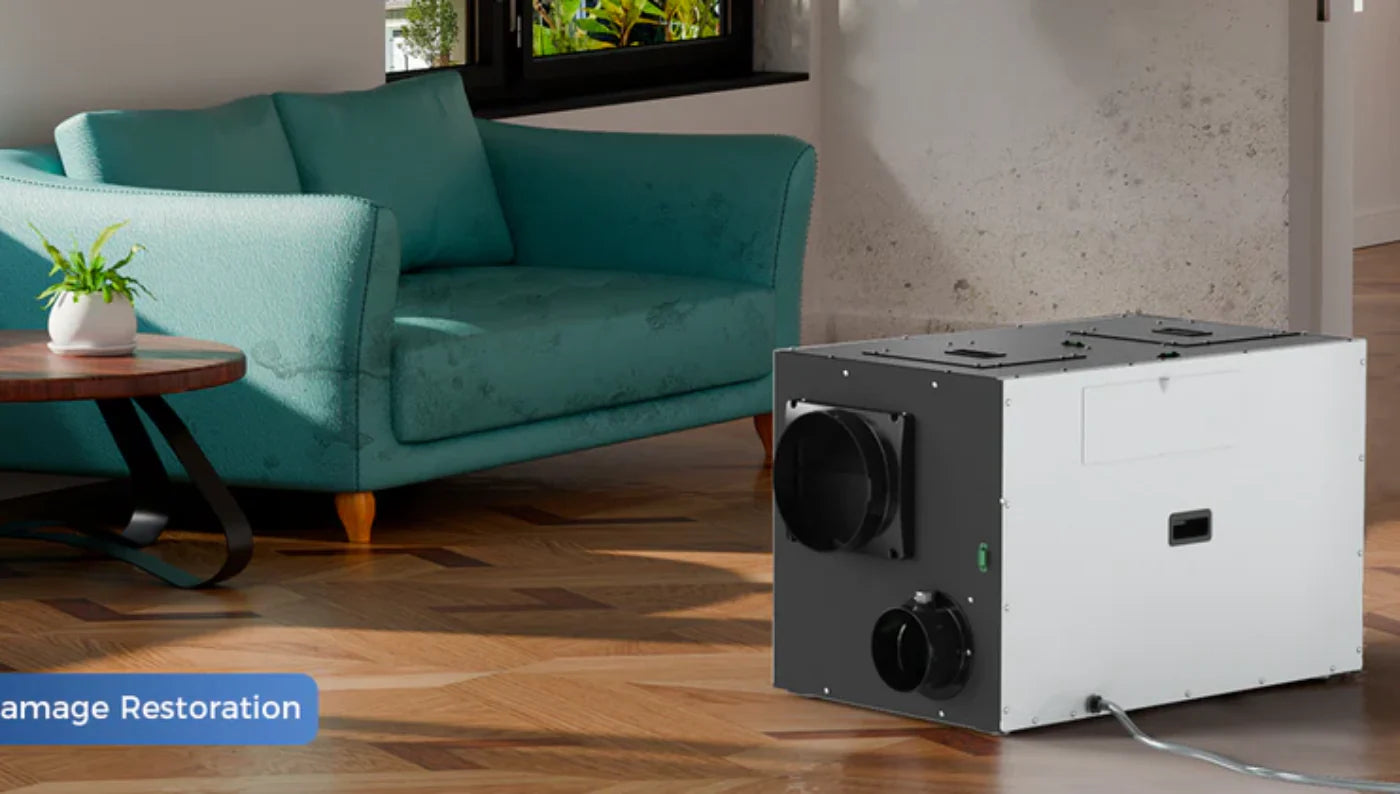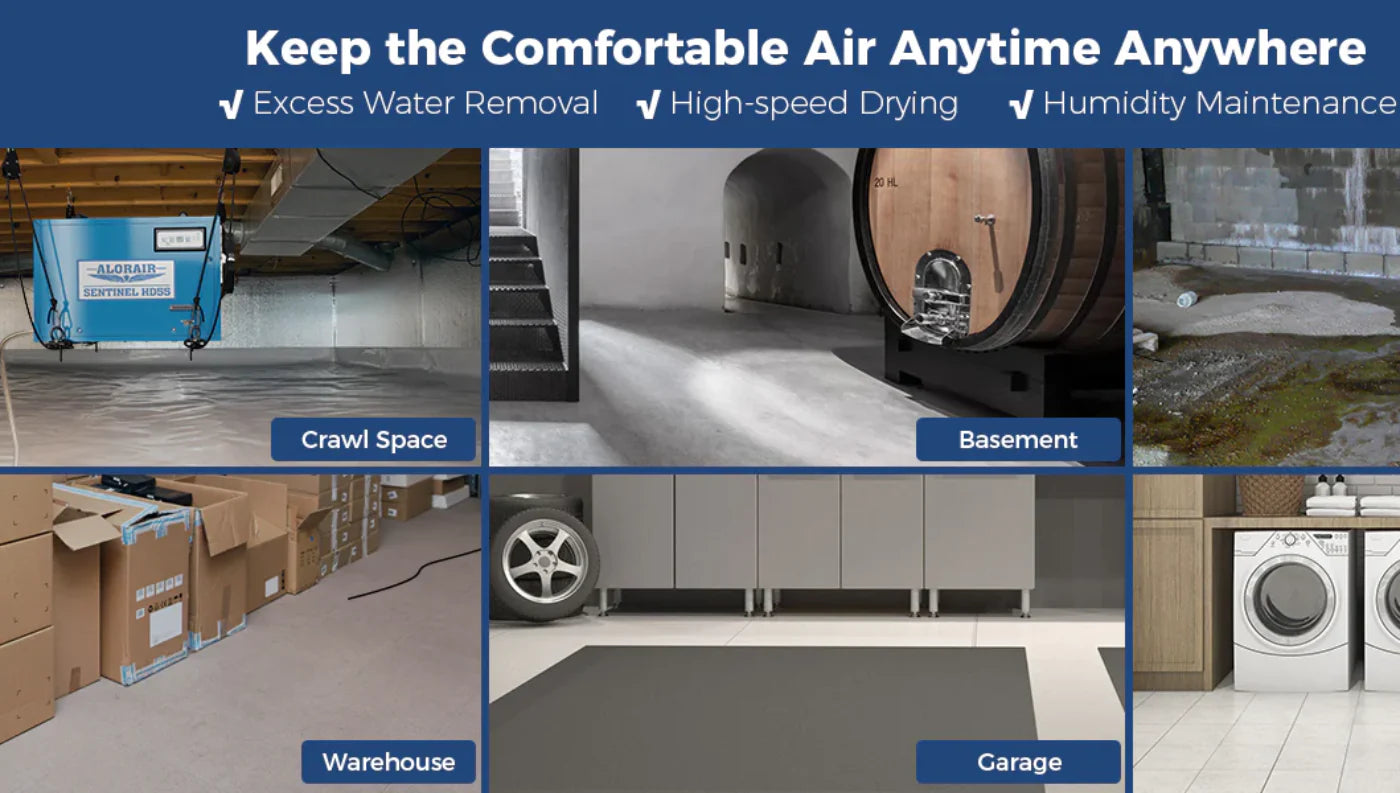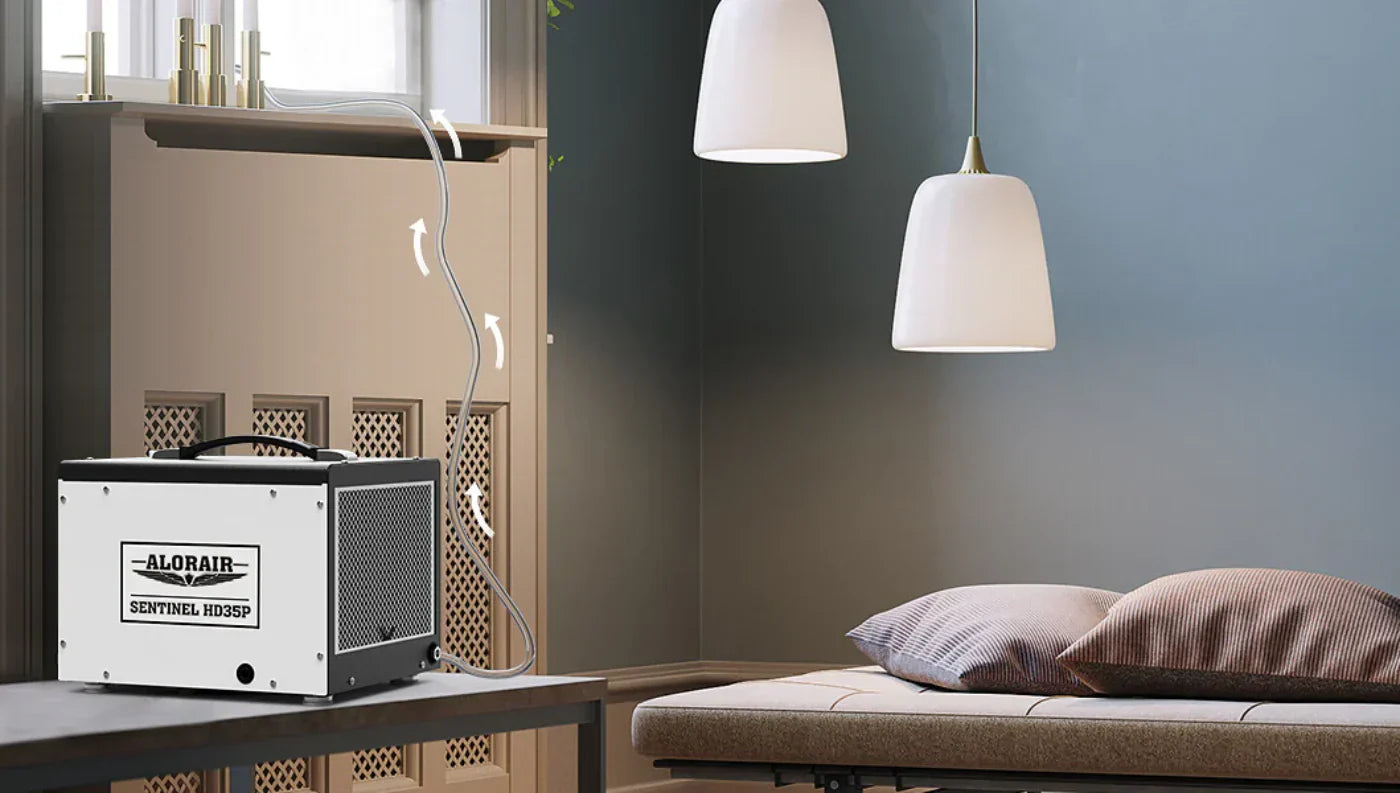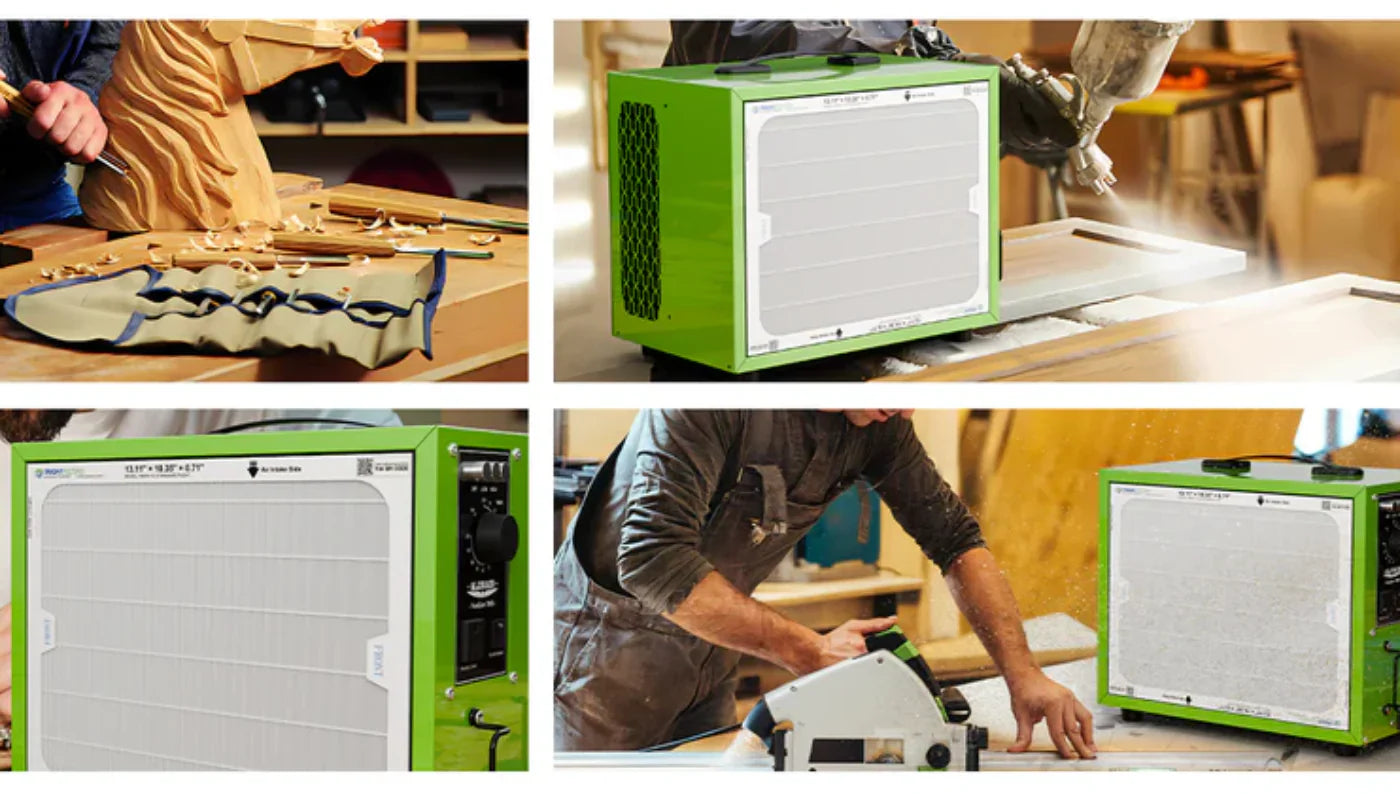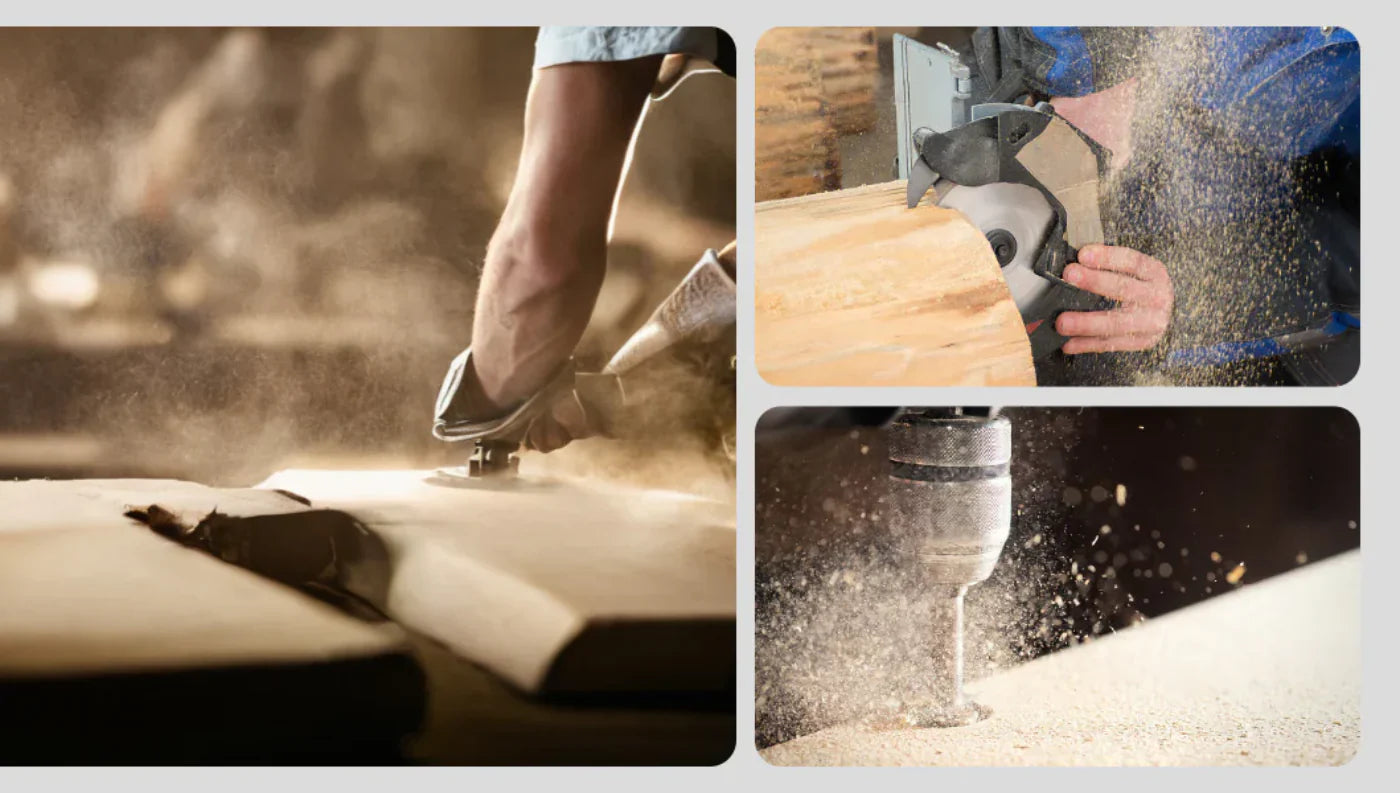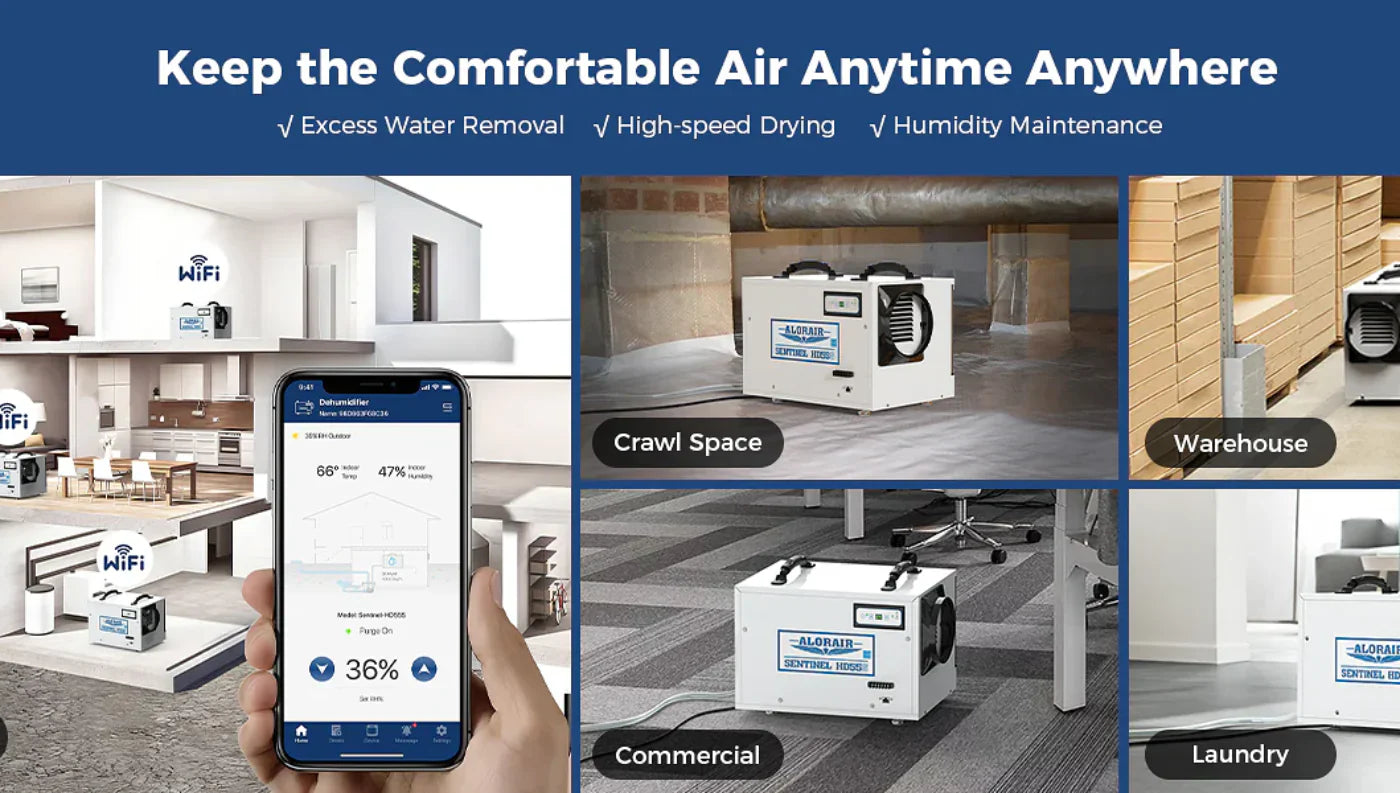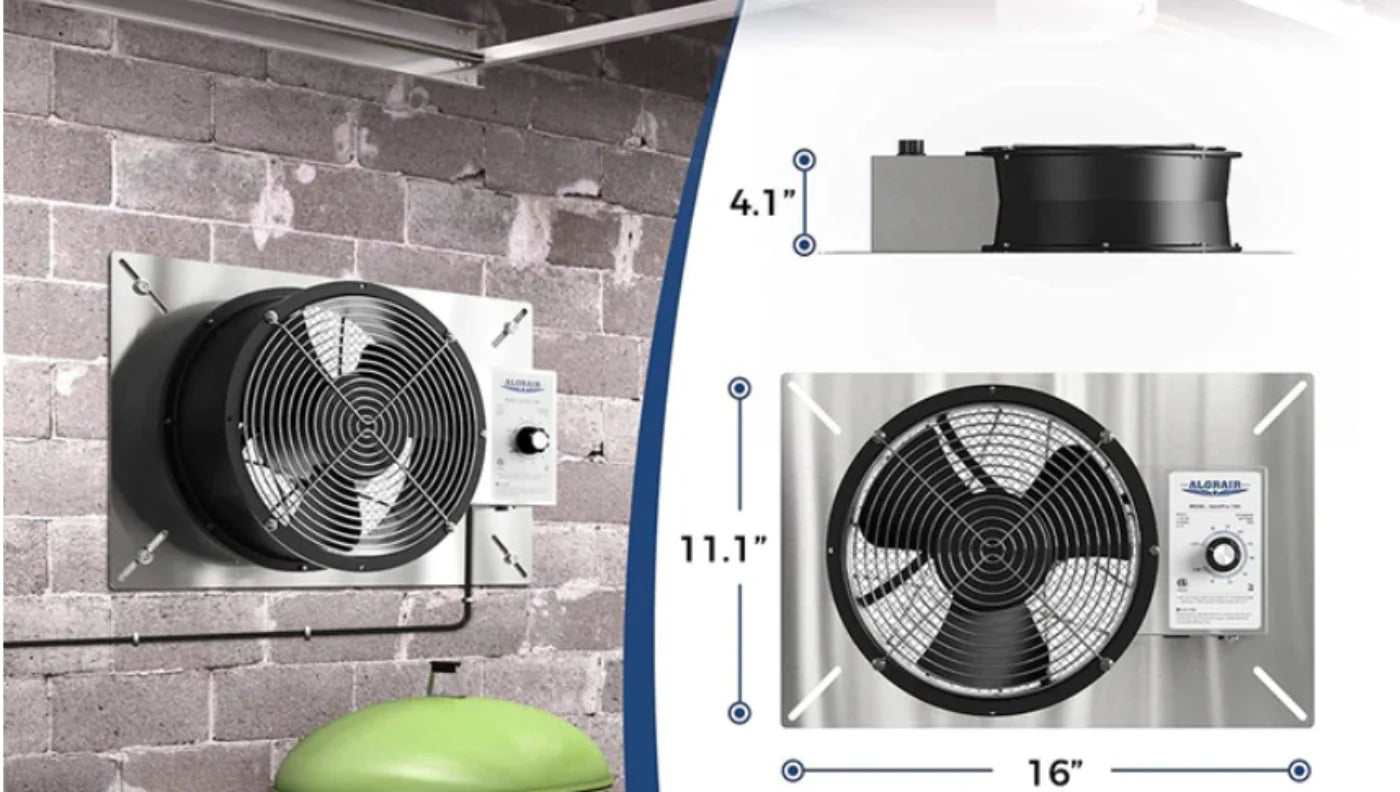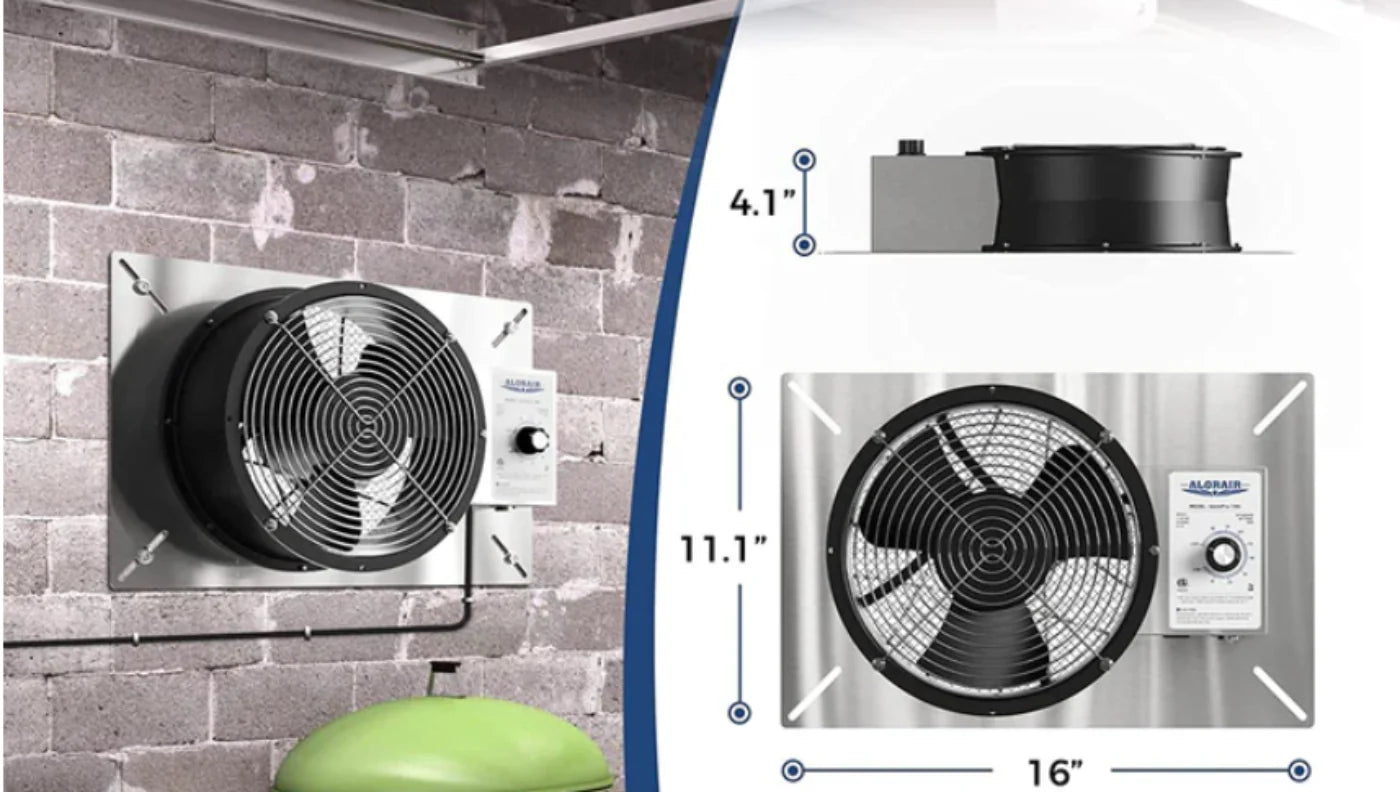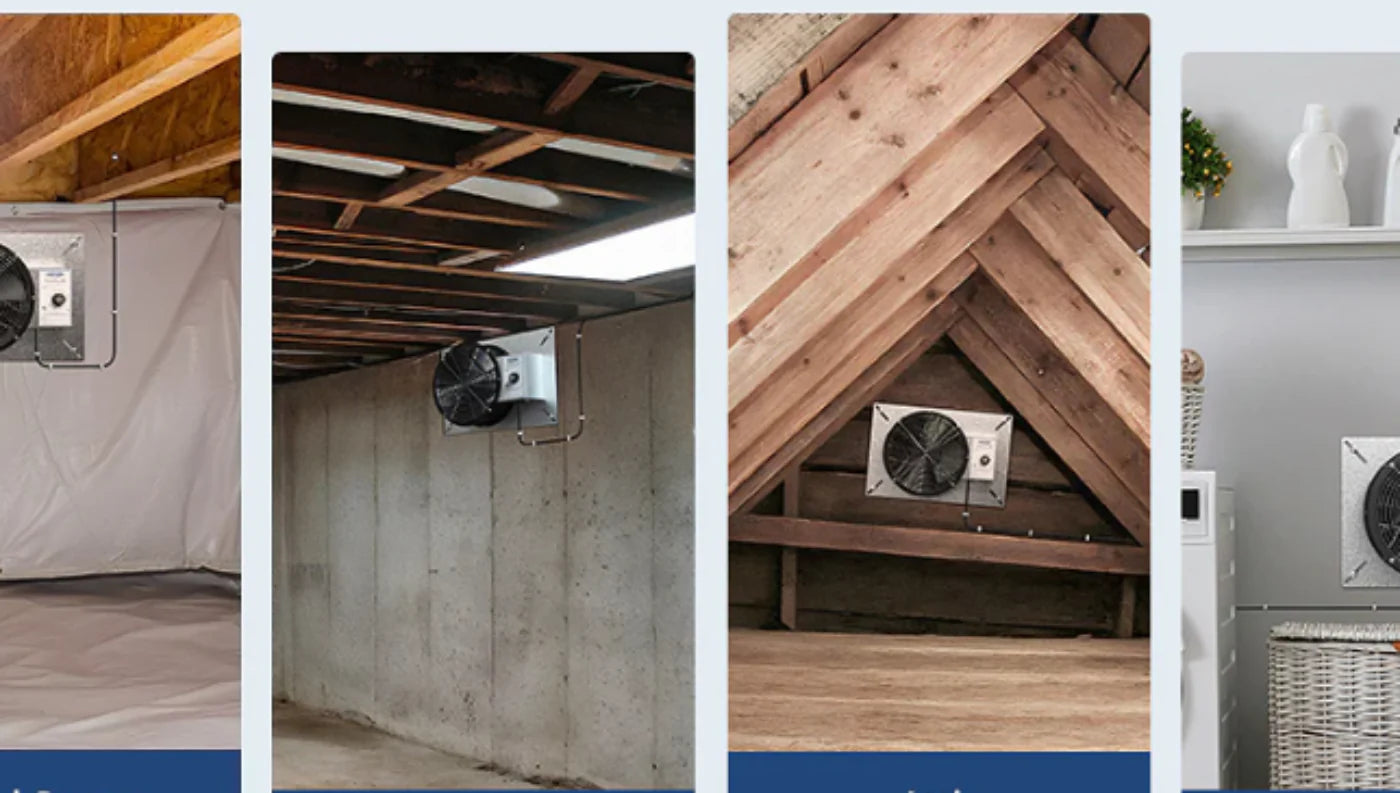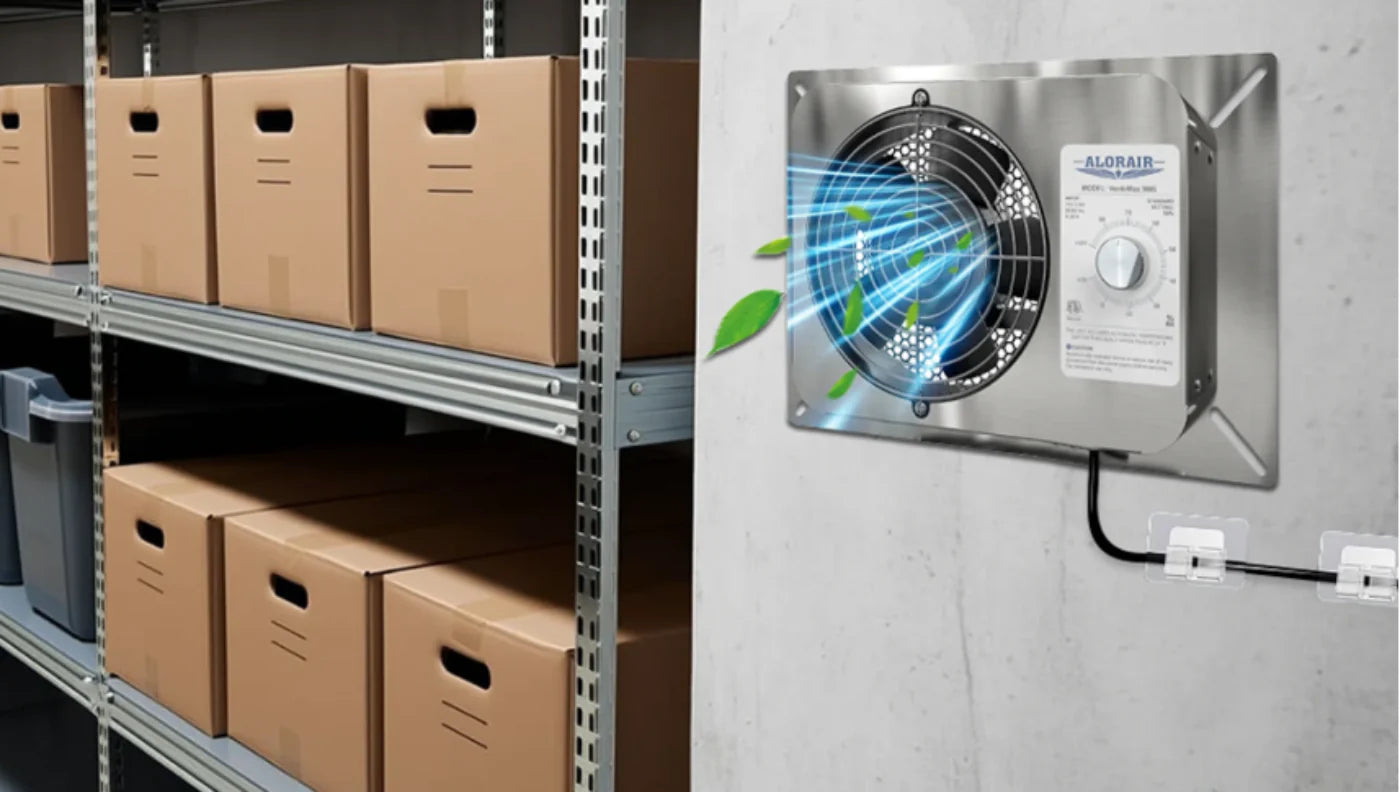Is the air in your house stuffy, humid, and vaguely musty? Some people say you should buy an air purifier, some say dehumidifiers are the right solution. In the end, who is the “air improvement magic weapon”? Are you also struggling with this problem? Don't worry, today we will find out.
What Is an Air Purifier?

An air purifier draws indoor air through a fan system and pushes it through a multi-layered filter system. The most common types of filters include:
HEPA filters: These trap microscopic particles like dust mites, mold spores, pet dander, and pollen. A high-efficiency HEPA filter captures 99.97% of particles as small as 0.3 microns — that’s nearly 100 times smaller than the width of a human hair.
Activated carbon filters: These absorb odors, smoke, and volatile organic compounds (VOCs) — perfect for households with smokers, pets, or chemical cleaning agents.
Think of an air purifier as a vacuum cleaner for the air, but smarter. Its job is to suck in dirty indoor air, trap unwanted particles through advanced filters, and push out clean, breathable air. It's your first line of defense against airborne allergens, fine dust, and invisible threats like bacteria or viruses.
Let’s break it down with real-world examples. A quality air purifier can remove: Fine particles like PM2.5 (common in urban areas and construction zones), Pet hair and dander floating around from cats or dogs, Pollen — a nightmare during allergy season, Smoke particles, whether from cooking, wildfires, or cigarettes, Germs, including airborne bacteria and viruses (depending on filter type)
You just finished vacuuming your living room. Outside, construction work is kicking up thick clouds of dust. You check your indoor PM2.5 level — it’s at 150 µg/m³, which is considered unhealthy. Turn on your air purifier, and within 30 minutes, that level can drop to 15 µg/m³ or even lower. That’s not just clean — that’s hospital-grade clean air.
Who Should Definitely Use One? If someone in your household has:
-
Asthma or seasonal allergies
-
Chronic respiratory issues
-
A newborn baby or an elderly family member at home
Then yes, an air purifier isn’t optional. It’s essential.
People who live in cities with heavy traffic pollution, or close to industrial zones, or even next to a neighbor who smokes on their porch every day air purifiers can significantly improve air quality and reduce long-term health risks.
What Is a Dehumidifier?

You grab a cold drink on a humid day and notice water droplets forming on the glass. That’s condensation — and that’s exactly how a whole house dehumidifier works. Here's the simple breakdown: It pulls in moist indoor air using a fan. The air passes over cool coils that condense the water vapor into actual liquid. The water collects in a tank or drains out via a hose. The now dry, filtered air is pushed back into the room.
The result? A drop in relative humidity and a big boost in indoor comfort. A dehumidifier doesn’t care how dusty your air is. Its only job is to manage one invisible but critical factor — indoor humidity.
While air purifiers are busy filtering out allergens, smoke, and airborne particles, a dehumidifier is focused on one thing: removing excess moisture from the air. It’s the unsung hero in any home battling dampness, mold, or musty smells.
Real Numbers That Matter
Recommended capacity: For a medium-sized room (roughly 200–250 sq. ft. or about 20 m²), you’ll want a unit that removes 10 to 20 liters of moisture per day.
Ideal indoor humidity: Experts recommend keeping your indoor relative humidity between 45% and 55%. That sweet spot is comfortable for humans and hostile to mold, mildew, and dust mites.
Portable dehumidifiers: In many Australian homes — especially in humid regions like coastal Queensland or parts of New South Wales — portable dehumidifier is a practical solution. They can be easily moved between rooms and plugged in wherever needed. A good example is the AlorAir Sentinel HD55, a compact yet powerful unit capable of drying out a damp laundry or basement space overnight.
A good dehumidifier, It can pull 3–5 liters (0.8–1.3 gallons) of water out of the air overnight. That’s the difference between waking up in a room that smells like fresh laundry — versus one that smells like a forgotten gym locker.
What's The Difference Between An Air Purifier And A Dehumidifier?
In many Australian homes, particularly in coastal regions or older builds, indoor air quality can suffer from one of two main issues: pollutants or moisture. That’s where air purifiers and dehumidifiers come in — but don’t confuse them. These machines serve very different purposes.
An air purifier is designed to filter the air. It removes airborne particles like dust, pollen, pet dander, mould spores, and even bushfire smoke — a rising concern during the warmer months. Think of it as a high-efficiency vacuum: it draws in surrounding air, traps harmful particles inside layered filters (usually HEPA and carbon), and releases purified air back into the room. It’s ideal for families with asthma or allergies, homes with pets, or anyone living near heavy traffic, like in Sydney’s Inner West or Melbourne’s freeway-adjacent suburbs.
However, an air purifier has zero impact on humidity. If your house feels sticky in summer, your walls sweat in winter, or your linen smells faintly of mildew, a purifier won’t solve that. It doesn’t extract moisture from the air, and it won’t prevent mould growth, condensation on your windows, or that damp smell that clings to wardrobes and carpet.
That’s where a dehumidifier steps in. Its only job is to control moisture. Using a process similar to how water beads on a cold glass, it draws humid air across cooled coils, condenses it into liquid, and collects it in a tank or drains it away. The result is drier, more comfortable air — and far less chance of mould, mites, or structural damage caused by excess humidity. Whether you live in Brisbane’s subtropical humidity or deal with Hobart’s cold, damp winters, a dehumidifier can be a game changer.
Importantly, a dehumidifier won’t clean your air. It doesn’t trap dust, remove smoke, or help with hay fever. Just like an air purifier can’t help dry wet laundry or fix foggy windows, a dehumidifier can’t filter out pollutants. Each machine has a completely different focus — one tackles air quality, the other controls air moisture.
So, how do you choose? Simple
If your eyes sting from pollution, your allergies flare up, or your indoor air feels stale, get an air purifier.
If your windows drip in the mornings, your ceiling corners are going black, or your basement smells musty, invest in a dehumidifier.
Still unsure? Ask yourself this: Is the air dirty — or is it wet?
Real-Life Aussie Use Cases
Do you live near Parramatta Road and wake up congested every morning? → Air purifier.
You’re renting a house in Cairns, and the ceiling's started to bubble? → Dehumidifier.
Your bathroom in an old Melbourne terrace has no fan and always smells damp. → Dehumidifier.
You’ve got a newborn and want to keep the air clean and safe? → Air purifier, and consider a dehumidifier if you’re in a humid climate.
And if you’re dealing with both pollution and humidity — which is common in parts of Australia — you may need both units working together to keep your home healthy, breathable, and mould-free.
Quick Comparison Table
|
Feature |
Air Purifier |
Dehumidifier |
|
Primary Purpose |
Removes airborne particles and contaminants |
Extracts moisture from the air |
|
What It Targets |
Dust, pollen, smoke, pet dander, bacteria, odors |
Humidity, mold, mildew, and condensation |
|
How It Works |
Uses filters (like HEPA & activated carbon) to trap pollutants |
Cools moist air to condense water, then releases dry air |
|
Room Benefit |
Cleaner, fresher air for lungs |
Drier environment, fewer damp smells |
|
Best For |
Allergy sufferers, urban homes, and homes with pets |
Homes in humid climates, basements, and mold-prone areas |
|
Noise Level |
Typically low to medium |
Medium to high, depending on the model |
|
Energy Use |
~60–100 watts/hour |
~200–400 watts/hour |
|
Popular Portable Option |
Yes – HEPA tower units, desktop purifiers |
Yes – e.g. AlorAir Sentinel HD55, hOmeLabs 22 Pint model |
Is It Better To Have An Air Purifier Or a Dehumidifier?
That depends entirely on what your home is struggling with. Is it musty smells and mould spots… or itchy eyes and traffic fumes?
If you’re unsure where to start, don’t guess — do a quick self-check below and find out what your air really needs.
Q1: Is your home constantly damp? Walls feel sticky? Mould popping up in corners?
You need an air dehumidifier.
Especially in basements, laundry rooms, or sunless spare bedrooms where humidity levels often spike above 60%, a dehumidifier is essential to protect your health and your home’s structure.
Q2: Do you live near a busy road, a construction site, or a city with frequent bushfire smoke or smog?
Go for a high-quality air purifier.
It’s not just about comfort — it’s about safeguarding your lungs. A purifier with a HEPA filter can trap fine particles, allergens, and pollutants that sneak in from outside.
Q3: Dealing with both dust and dampness?
Don’t compromise — get both.
A purifier + dehumidifier combo is the ultimate solution for clean, dry, breathable air. They complement each other and work together to create a healthier living space, especially in Australia’s unpredictable climate.
Ready to Breathe Better, Sleep Better, and Protect Your Home?
Head over to AlorAir Australia — your one-stop shop for professional-grade air purifiers, portable dehumidifiers, and powerful all-in-one units. Whether you’re in Brisbane’s humidity, Sydney’s smog, or Melbourne’s musty winters, we’ve got the tech to match your needs.
Is There A Dehumidifier Air Purifier Combo?
Yes, absolutely — and more brands are launching these combo units that merge both air purification and dehumidification into a single machine.
Take, for example, the AlorAir PureAiro HEPA Pro 870 series. This unit not only tackles indoor humidity by removing excess moisture, but also includes a high-efficiency HEPA filter that traps dust, pollen, pet dander, and even smoke particles. It’s a perfect match for Australian homes where both indoor humidity and airborne pollutants can be a problem, especially in humid coastal areas or cities affected by bushfire smoke.
For those who want a fuss-free solution — no need to juggle two separate machines — a combo unit like this is ideal. It saves space, reduces clutter, and can quietly work away in the background, delivering both drier and cleaner air with one plug.
However, a word of caution: these all-in-one machines usually don’t match the performance of dedicated devices. If your home struggles with severe dampness or very poor air quality — think mould-infested basements or areas with heavy traffic pollution — you’ll get better results with separate units specialised for each task. Separate machines tend to be more powerful, efficient, and easier to maintain.
In short, combo units are excellent for moderate needs, smaller spaces, or anyone wanting a convenient “set and forget” option. But for heavy-duty conditions, splitting the job between a top-notch portable dehumidifier and a specialised air purifier remains the best bet.
If you want to explore some of these combo models or see what works best for your Aussie home, check out AlorAir Australia — they offer professional-grade options designed specifically with Australian climate challenges in mind.
Conclusion
An air purifier cleans the air; a dehumidifier controls humidity — their jobs are clear and different. Got dampness? Get a dehumidifier. Got pollution? Get an air purifier. Don’t mix them up.If your home is both damp and dirty, go for a combo unit or, better yet, a purifier plus a portable dehumidifier — that’s the winning formula.




